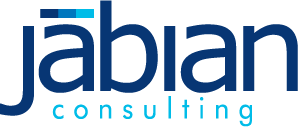In the ever-shifting landscape of today’s economy, business leaders face the dual challenge of stewarding limited resources and maintaining workforce engagement, especially as budgets constrict and the future of business performance appears uncertain. HR and Marketing leaders are seeking innovative strategies to keep employees invested in their work without the promise of financial incentives, as hiring freezes and layoffs loom on the horizon.
The pivot in many organizations has been towards maximizing productivity by fostering an environment where engagement is not just an HR metric but a foundational business strategy. Research shows that companies with high employee engagement are 21% more profitable, but the question is how to achieve this without traditional monetary motivations.
Amid budget cuts, savvy leaders are leaning into transparency as a form of currency. By openly communicating the company’s status and involving employees in the strategy for the future, businesses can foster a sense of shared fate and mutual trust. This trust, as Harvard Business Review suggests, can lead to a more committed and resilient workforce.
Forward-thinking companies are also harnessing the power of recognition. Employees seek acknowledgment, and simple attention to positive activities can sometimes be as motivating as a bonus. Adobe’s “Check-In” program, which abolished annual reviews in favor of ongoing discussions about performance and expectations, exemplifies a more continuous and personalized approach to recognition.
Another key strategy is to enhance employees’ connection to the work they do. This can mean aligning roles with company values or providing opportunities for employees to work on projects that resonate with their personal interests or societal concerns. For instance, Google’s famous ‘20% time’ policy allows employees to dedicate one day a week to side projects, which has led to the development of significant product advancements.
The use of technology also plays a crucial role. With tools to streamline workflow and foster collaboration, teams can remain productive even in a decentralized working environment. Microsoft’s Work Trend Index reports that 82% of managers expect more flexible work-from-home policies post-pandemic, indicating a permanent shift in how we think about productive work environments.
However, these strategies are not one-size-fits-all. For example, a Gartner report shows that high-tech firms have been more successful in adapting to remote work environments than manufacturing companies, where on-site presence is often required. Therefore, it’s crucial for businesses to tailor their engagement strategies to their specific industry requirements and company culture.
Lastly, it’s important to note that employee engagement in uncertain times should not be a temporary fix but a long-term commitment. The investments made in your workforce now — be it through upskilling, wellness programs, or flexible work arrangements — are the seeds for tomorrow’s growth.
Despite what you may think, an uncertain economy does not have to spell disaster for employee engagement. By being transparent, recognizing efforts, aligning work with passion, utilizing technology, and committing to a long-term strategy, businesses can navigate through turbulent times with a robust, committed team. For leaders, the challenge is an opportunity to innovate and perhaps discover that non-monetary incentives can yield rich rewards in productivity and employee satisfaction.
These other Jabian Insights might also be helpful.
INSIGHT
5 Employee Engagement Trends with Positive ROI
The value of an engaged workforce is indisputable, with countless examples of companies with positive, aligned cultures far outperforming those without.
ARTICLE
Winning the War for Talent Requires a New Human Capital Experience
When the new human capital experience becomes part of your culture, it becomes a competitive advantage.


